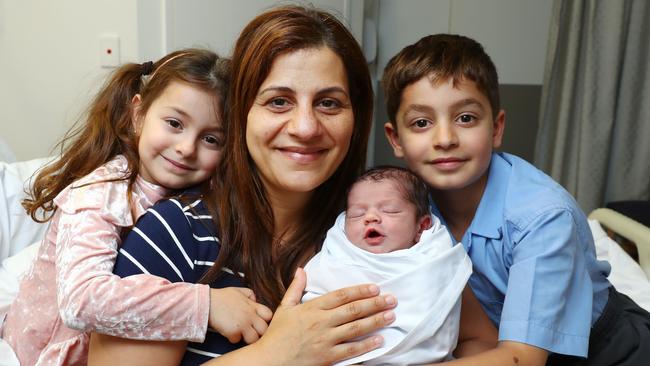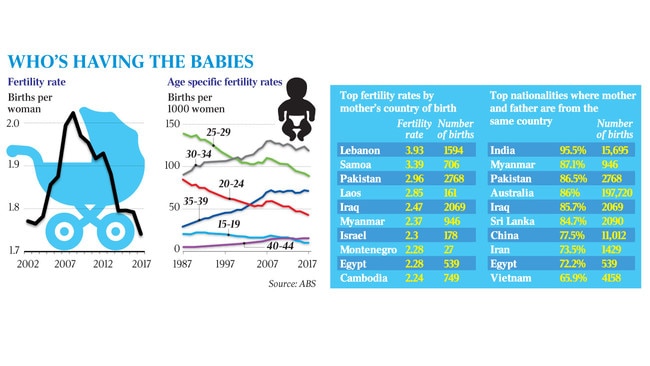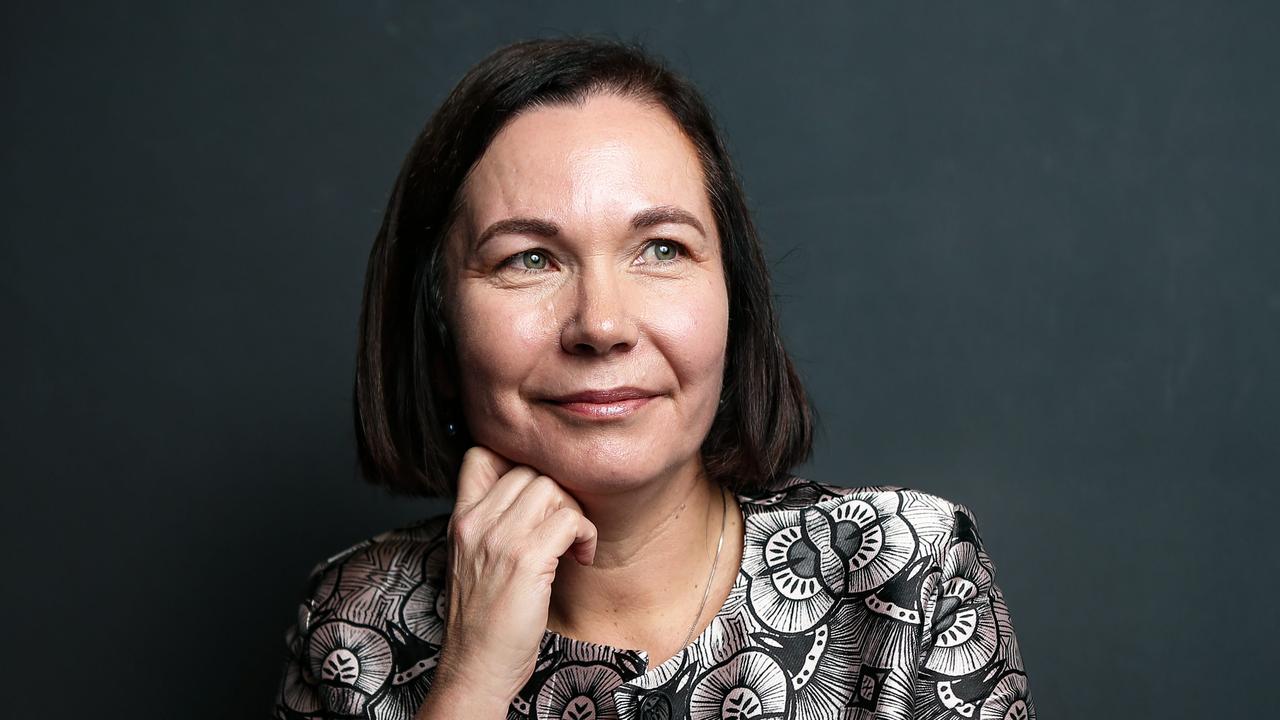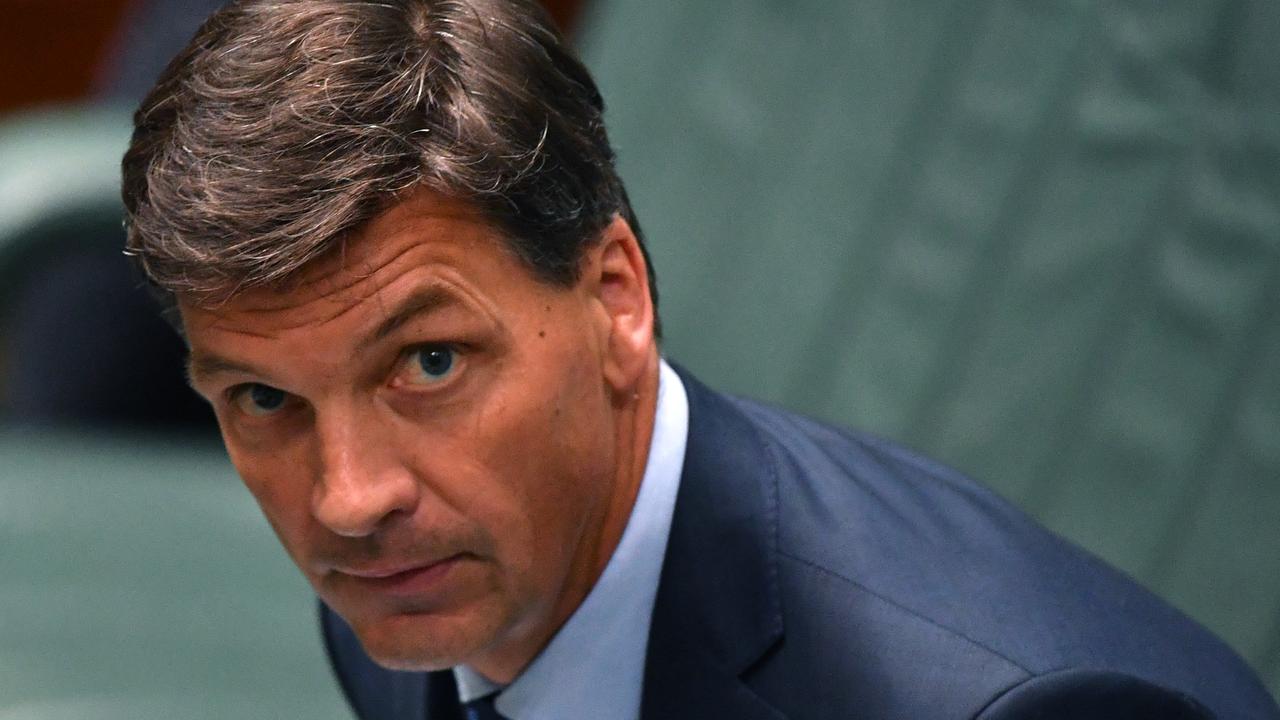Fertility rate lower than when Costello made his kids call
Australia’s fertility rate has fallen below the level it was in 2004.

Australia’s fertility rate has fallen below the level it was in 2004 when Peter Costello famously called on parents to have “one for mum, one for dad and one for the country”.
The baby bonus introduced by the then treasurer supported bigger families but neither the measure nor the baby boom could be sustained.
Figures released by the Australian Bureau of Statistics yesterday show the fertility rate in 2017 was 1.74 babies per woman, well below that needed to replace the people who died.
The falling fertility rate suggests that without migration, Australia’s population would be in decline.
However, the current debate over the level of population growth, and how that growth can be managed, has focused on new citizens rather than newborns.
Women born in Australia had a total fertility rate of 1.76, according to the ABS. The highest rate by country of birth was for mothers born in Lebanon (3.93) and the lowest was for women in unspecified countries in northeast Asia (0.81).
Geographically, there are lower fertility rates in the inner city, and higher rates in the suburbs, supporting the notion that people wanting to start families often move to where it is more affordable.

People choosing to, or medically being able to, have children later in life has led to more older mothers having fewer babies. In the past 30 years, the fertility rate of women aged 35 to 39 has more than doubled, and for women aged 40 to 44 it has tripled.
The median age of mothers in 2017 was 31.3 years, and for fathers, where recorded, it was 33.3 years. Teenage births continue to decline. “The long-term decline in fertility of younger mums, as well as the continued increase in fertility of older mums, reflects a shift towards late child-bearing,” ABS director of demography Anthony Grubb said yesterday.
“Together, this has resulted in a rise in median age of mothers and a fall in Australia’s total fertility rate.”
Two recent reports have highlighted rising caesarean rates and questioned whether the age of the mother is a factor.
In 2017, there were 106.2 baby boys born in Australia for every 100 baby girls born.
Caroline Moujalli, 39, who gave birth six days ago to her third child, said having children at a later age had suited her career-driven lifestyle. She left her job as an account manager for IBM, working up to 50 hours a week, and had her first child at 32. She decided to work part time for her family’s investment property firm while she raised her children Antoine, 8, April, 5, and newborn Alannah. Ms Moujalli, from the Hills District in Sydney, said she felt better prepared to have children in her 30s because she had already established her career and had travelled. “I don’t feel there is pressure to work full-time now that I have my children,” she said. “I can watch them grow in their early years, but not every mother has that liberty.”
Additional reporting: Jessica Cortis


